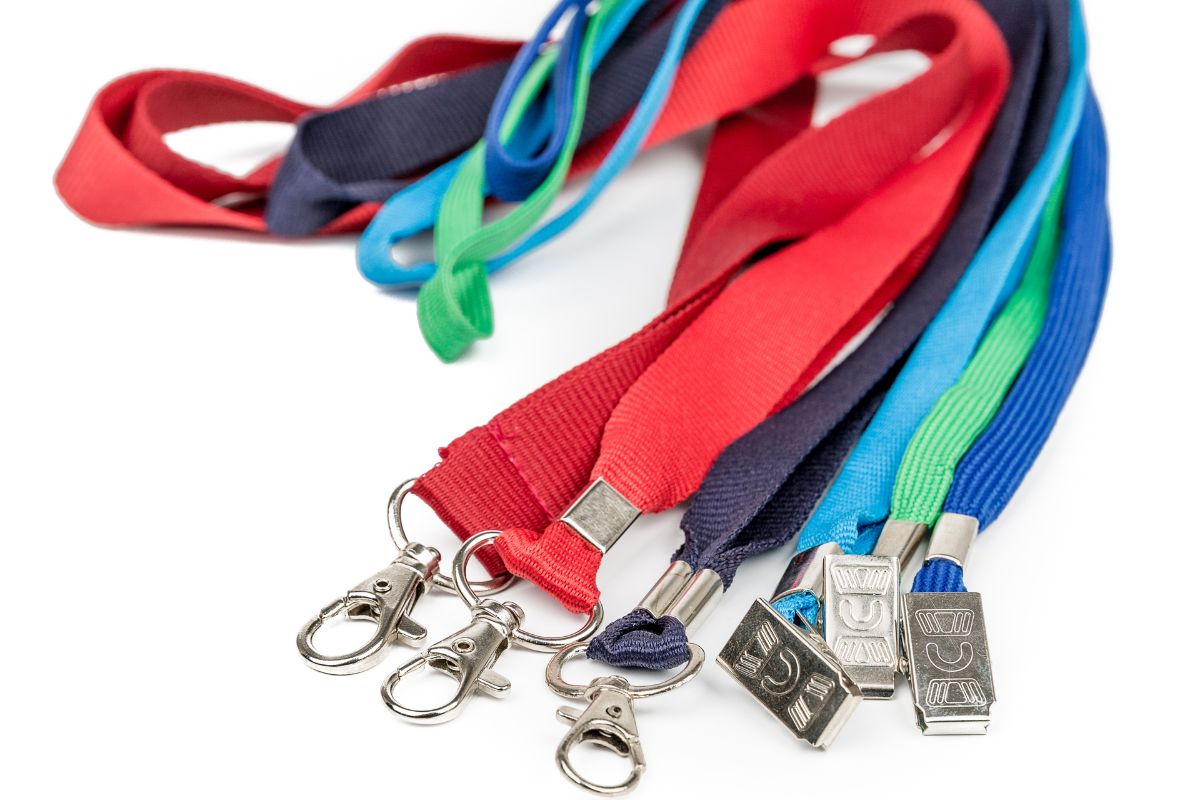Lanyards serve as a simple yet effective tool for carrying identification, keys, and small items, particularly in professional and event settings. They are a staple in offices, trade shows, and conferences where a visible display of credentials is necessary. The practical design of lanyards allows individuals to maintain accessibility and security for their essentials without compromising the ability to move freely.
Beyond their functional benefits, custom lanyards offer a powerful avenue for branding and personal expression, with a wide array of customization options that can align with corporate messages or individual styles. From showcasing company logos and colors to incorporating personalized designs and messages, custom lanyards transform a simple accessory into a statement piece.
As someone with firsthand knowledge of lanyards, I know there are numerous types to choose from, each with its advantages. Standard lanyards are typically a popular choice due to their straightforward functionality. However, there are also specialized lanyards, like breakaway variants, which incorporate a safety feature that allows the lanyard to easily disconnect when pulled, reducing the risk of injury in various environments. The materials used in lanyard production, including polyester, nylon, and eco-friendly options like bamboo or recycled PET, also play a crucial role in determining the durability, comfort, and overall appearance of the lanyard.
Selecting the right lanyard involves considering the specific needs of the industry or event. For some, security and compliance are paramount, dictating features like breakaway clasps or RFID shielding. For others, the focus may be on visual appeal and comfort, influencing the choice of material and design. My experience highlights the importance of understanding these factors to ensure that the chosen lanyard meets both practical requirements and aesthetic preferences, creating a cohesive and functional accessory.
Overview of Lanyards
Lanyards are practical straps or cords worn around the neck, shoulder, or wrist to carry items such as identification badges, keys, and small tools. These handy accessories serve as a means for security, visibility, and convenience in various settings.
Materials: I find that the most common materials used in lanyard construction include polyester, nylon, and cotton. Each material offers its benefits:
- Polyester is popular due to its balance of durability and cost-effectiveness.
- Nylon stands out for its high tensile strength and glossy finish, which makes graphics stand out.
- Cotton provides a softer texture for increased comfort during prolonged use.
Styles & Customization: Lanyard styles vary, from simple, flat fabric strips to beaded or woven varieties. The customization potential for lanyards is extensive; they can be ordered in various colors, printed with logos or text, and equipped with different attachments for specific needs.
- Visibility: Bright or reflective colors can enhance visibility for safety purposes.
- Identification: Lanyards can be paired with badge holders or clips to prominently display identification, which is essential in workplaces or at events.
Functionality: When considering functionality, a lanyard’s weight capacity, length, and comfort level are crucial. For instance, I prefer lightweight lanyards made from smooth fabric to reduce neck strain during extended wear. Breakaway connectors are also a feature that can add a safety dimension by detaching under stress to prevent choking hazards.
In summary, lanyards are versatile tools that can be tailored to fit a wide range of preferences and applications. Whether one prefers a simple style for carrying keys or a customized, durable nylon piece for professional events, there’s a lanyard to suit the purpose.
Types of Lanyards
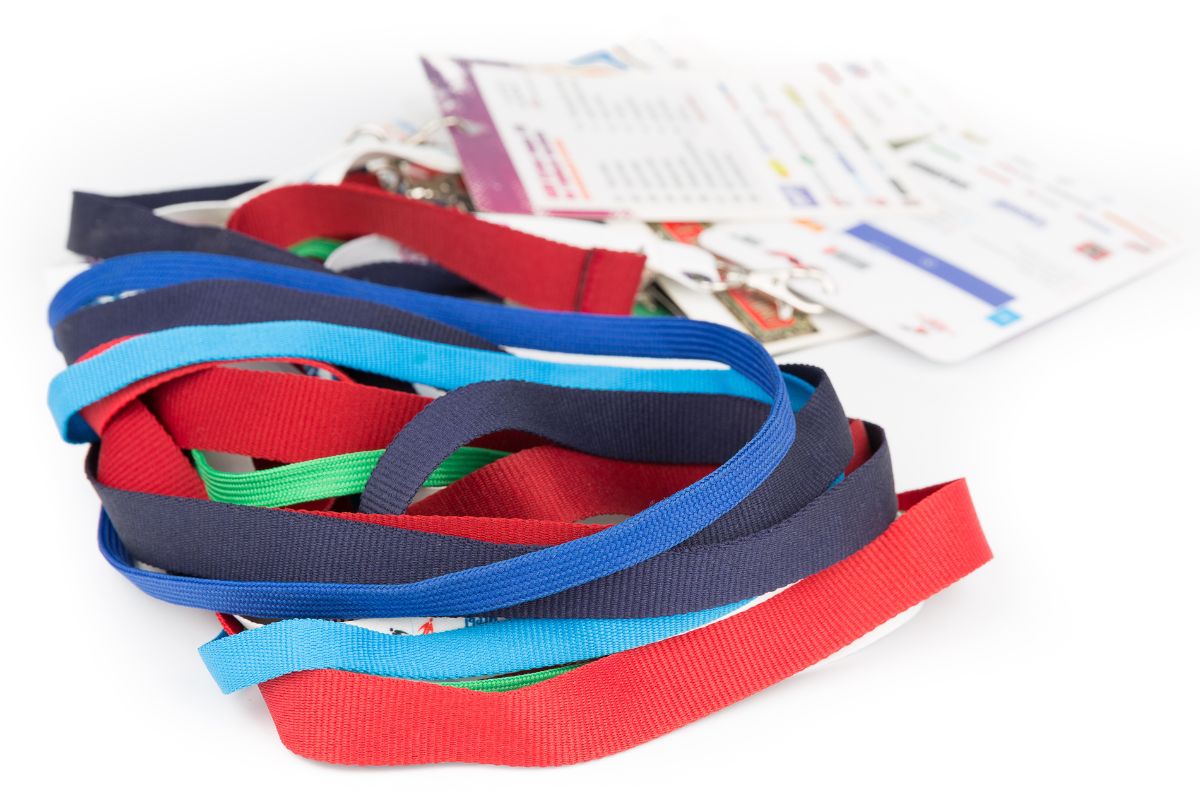
In my experience, choosing the right type of lanyard depends on factors such as the intended use, desired style, and required durability. Here is a look at the different varieties available.
Polyester Lanyards
Polyester lanyards are both affordable and durable, making them an ideal choice for most applications. They can be screen printed with logos and text in various colors, offering a balance between cost and style.
Nylon Lanyards
Nylon lanyards are known for their durability and high-quality finish. They have a noticeable shine which can make printed logos and graphics stand out.
Woven Lanyards
Woven lanyards are made from strong fabric and are often chosen for their style and durability. The text or logo is woven directly into the lanyard, creating an elegant and textured appearance.
Tubular Lanyards
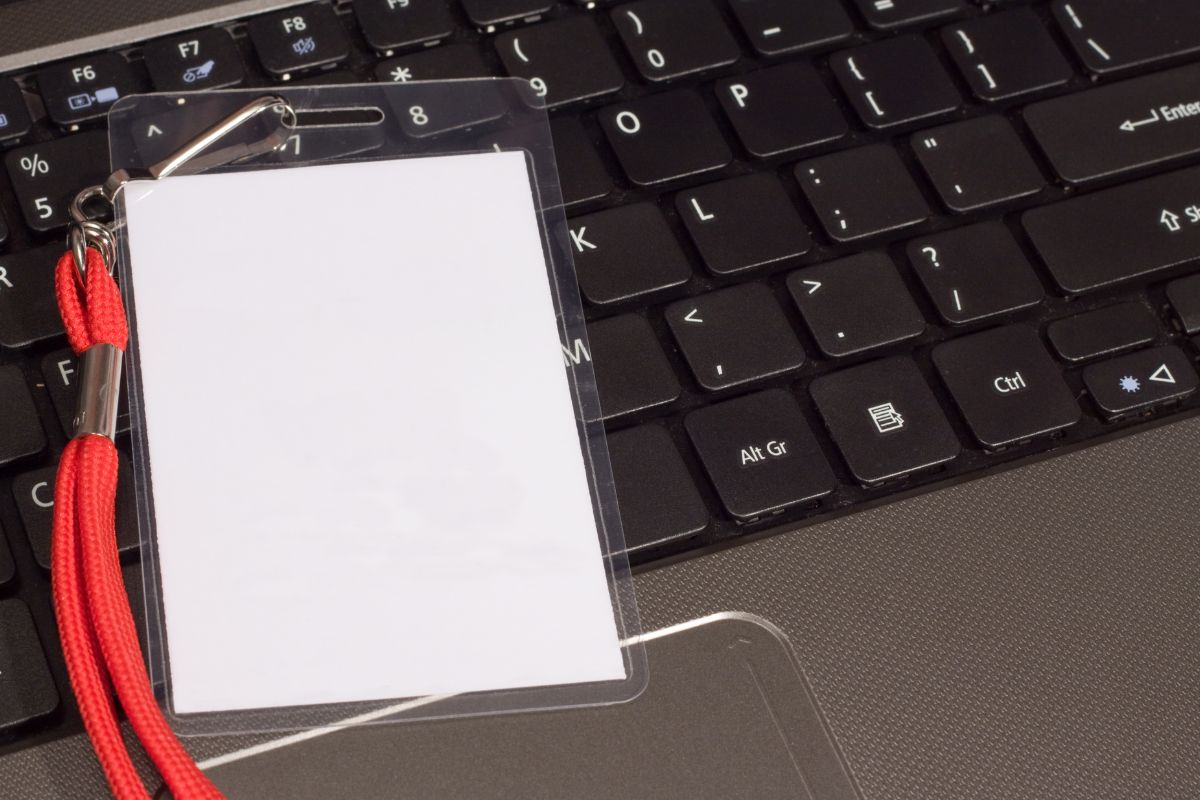
Tubular lanyards, made from tube-stitched polyester, offer both comfort and an economical solution. Available in a range of colors, they serve well for a variety of needs.
Dye Sublimated Lanyards
Dye sublimation lanyards allow for colorful and detailed designs. Through the dye sublimation process, your artwork is embedded into the fabric, ensuring that the design won’t wear or fade.
Cotton Lanyards
Cotton lanyards are a comfortable and sustainable option. The eco-friendly material can make them a preferred choice for organizations conscious of their environmental impact.
Retractable Lanyards
Retractable lanyards are ideal for those who need to frequently use keys, cards, or USB flash drives. The retractable feature adds to their convenience, allowing for easy access.
Breakaway Lanyards
Safety is paramount with breakaway lanyards, which feature a safety break for easy release. These help avoid injuries or choking by coming apart under pressure.
Intended Use and Industries

In choosing the right lanyard, it’s crucial to consider the specific context they will be used in. Different industries and events have diverse requirements, from the materials and attachments to the functionalities these lanyards provide.
Event Lanyards
At events such as conferences, trade shows, and concerts, lanyards serve as an essential tool for identification. They prominently display name tags and badges, ensuring that attendees and staff are easily recognizable. The use of vibrant colors and clear pockets for badges makes them indispensable for quick visual identification in bustling event locations.
Safety Lanyards
In the context of safety within work environments like construction sites, safety lanyards are a type of personal protective equipment designed to prevent falls and reduce the risk of injury. They generally come in two forms: positioning lanyards that help an employee maintain their place, and shock-absorbing lanyards that are capable of arresting falls.
Office and Corporate Lanyards
In offices, lanyards are part of the organizational culture, enhancing security by holding ID badges and keycards. Typically made from durable materials, they ensure that employees have their identification accessible at all times, streamlining security procedures and simplifying entry into restricted areas.
Healthcare Lanyards

Within hospitals and broader healthcare settings, lanyards contribute to hygiene and sanitation. They hold ID badges for doctors and staff, providing clear visibility and easy access while complying with strict sanitation protocols to prevent contamination in sensitive environments.
Educational Lanyards
For schools, lanyards are an effective way to display identification, increasing security on campus. They help in distinguishing between students, teachers, and visitors quickly, and often, different colors or designs are used to identify various groups or grade levels within the institution.
Industrial Lanyards
In industrial settings, where workers interact with machinery and equipment, lanyards must be strong and functional. Safety is the top priority, and these lanyards often incorporate features that can withstand the rigors of an industrial environment while ensuring that crucial tools or safety devices are always within reach.
Lanyard Attachments and Features
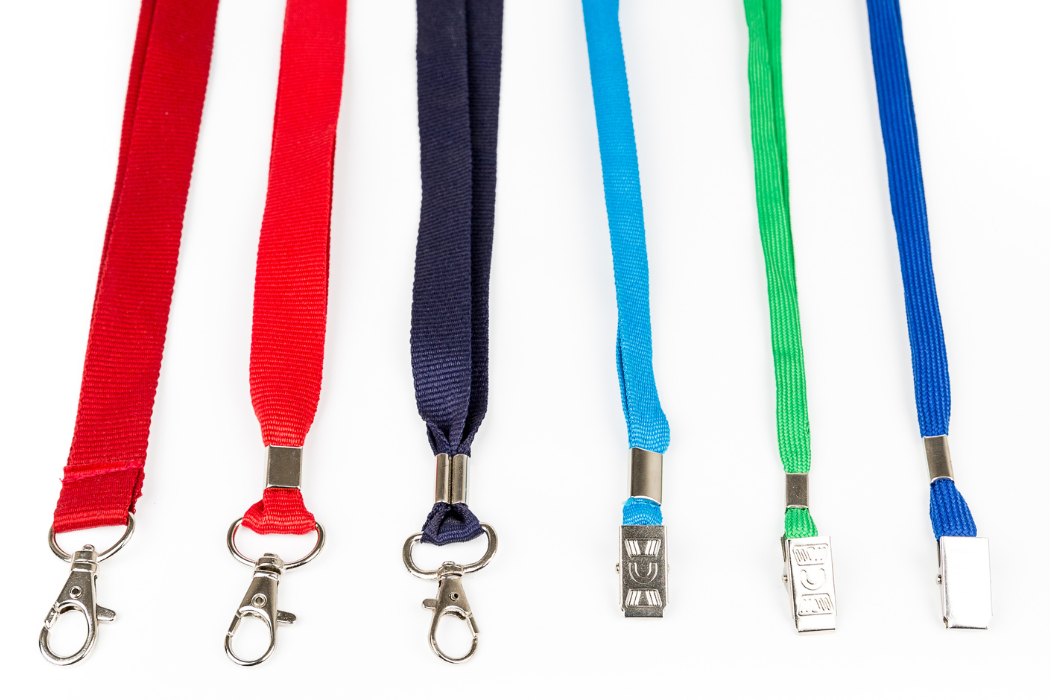
In my exploration of lanyards, I’ve found that the attachments and safety features they come with, as well as the customization options available, play a crucial role in their function and appeal.
Attachment Types
I’ve observed several attachment types that offer different benefits for lanyard users. A Swivel Hook provides the ability to rotate attached items, such as ID cards, which increases flexibility. Key Rings are ideal for holding keys or small tools and are quite durable. Then there are Clips, which are designed to attach and detach quickly from card holders or badges. Here is a simple breakdown:
- Swivel Hook: Allows rotation of attached items for ease of use.
- Key Rings: Suitable for securing keys, providing a strong hold.
- Clips: Offer quick attachment and detachment of items.
Safety Features
Safety is paramount when it comes to wearing lanyards, especially in environments where they can catch on equipment or pose a risk. The Breakaway Feature is a safety mechanism designed to separate the lanyard if it’s pulled with force, effectively avoiding choking or other injuries. Here’s how safety is prioritized:
- Safety Break: Automatically detaches under high tension for safety.
- Quick Release: Enables easy removal of the lanyard in case of an emergency.
Customization Options
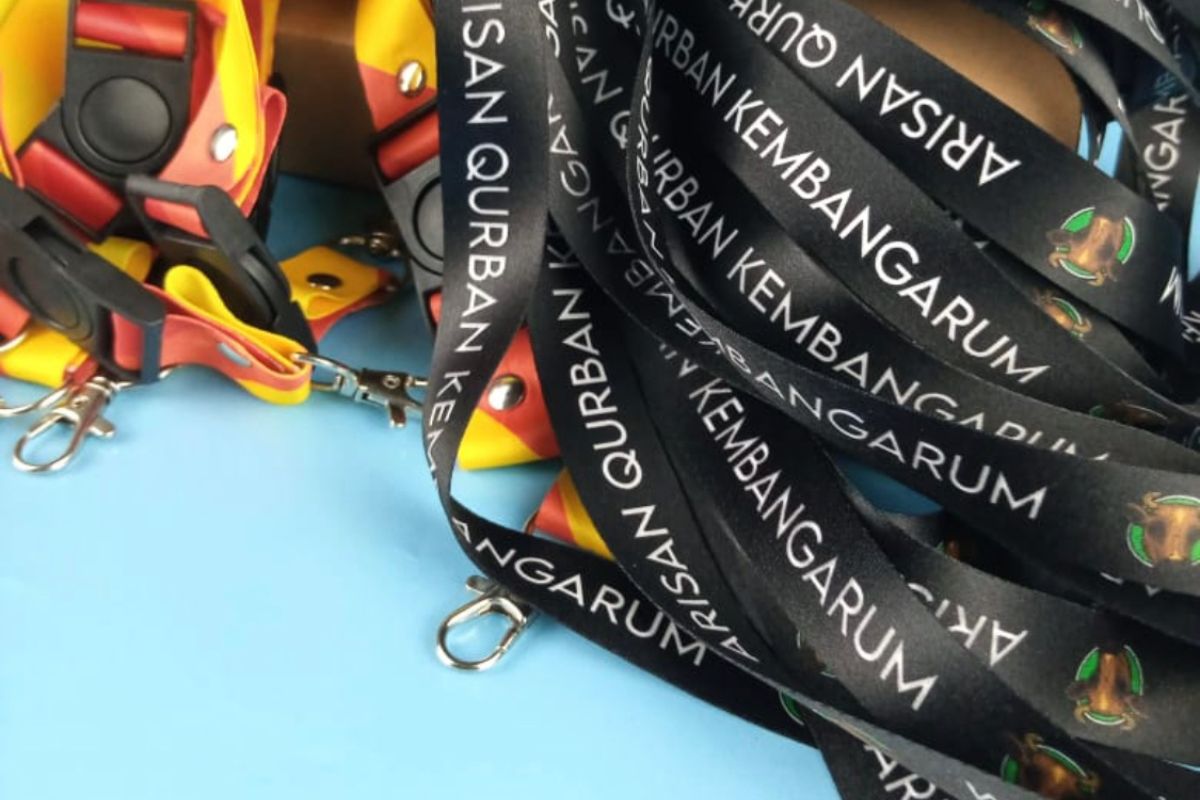
Custom lanyards offer a myriad of customization options to align with my brand identity or personal style. Logos or Printed Text can be added for branding purposes, creating a professional look. Colors can also be chosen to complement my brand or event theme. Here’s how customization enhances appeal:
- Logos and Printed Text: Custom prints for branding or identification.
- Colors: A variety of color options for brand or personal preference.
I understand that the right combination of these features can determine the overall functionality and user experience of a lanyard.
Selecting the Right Lanyard
When I choose lanyards for either personal or professional use, I prioritize functionality and durability, ensuring that my selection aligns with the intended use. For example, in a hazardous work environment, safety is imperative, and a breakaway lanyard is advisable to prevent accidents.
The material of a lanyard is a key determinant of its comfort and life span. From my experience, polyester lanyards strike a balance between affordability and endurance, suitable for everyday use. For an eco-friendly option, materials like bamboo or recycled PET serve both an aesthetic and functional purpose without compromising on strength.
In terms of style and visibility, I consider the colour and design that best represents my or the organization’s identity. I add relevant accessories like a badge or ID to the lanyard for convenience and to enhance visibility. Here’s a guide to material options I’ve found useful:
| Material | Comfort | Durability | Aesthetic |
| Polyester | High | High | Versatile |
| Nylon | Medium | Very High | Sleek |
| Tubular | Medium | Medium | Simple |
| Bamboo | High | High | Natural |
| Recycled PET | High | High | Eco-Conscious |
When size matters, for subtle wear, a thin lanyard is suitable, whereas I prefer wider lanyards for better support and more space for customization.
Lastly, the attachment type is equally important; from swivel hooks to carabiner clips, I ensure that it aligns with the lanyard’s intended use. For running events, I might include race numbers, while for security, I ensure they are tamper-proof.
In selecting the right lanyard, I assess my needs, weigh the pros and cons, and choose accordingly to provide a perfect blend of safety, practicality, and representation.
Care and Maintenance
When it comes to lanyard care, proper cleaning and maintenance are paramount to ensure durability and longevity. I’ll outline how to effectively maintain various types of lanyard fabrics.
Polyester Lanyards:
- Spot Cleaning: For light stains, I recommend using a mild detergent with water. Apply the mixture to the stain and gently rub it before rinsing and air-drying the lanyard.
- Machine Washing: If machine washable, wash in cold water on a gentle cycle, and then air-dry to prevent shrinkage.
For maintaining my lanyards, I follow a regular inspection routine. This ensures their durability and safe usage. Here’s a quick checklist:
| Maintenance Task | Description |
| Visual Inspection | Check for fraying, wear, and tear. |
| Functionality Test | Ensure clips and attachments function correctly. |
| Cleaning | Clean according to fabric type after heavy use or soiling. |
By taking these steps, I prolong the life of my lanyards and ensure they stay in good working condition, ready for their intended use.
Environmental Considerations
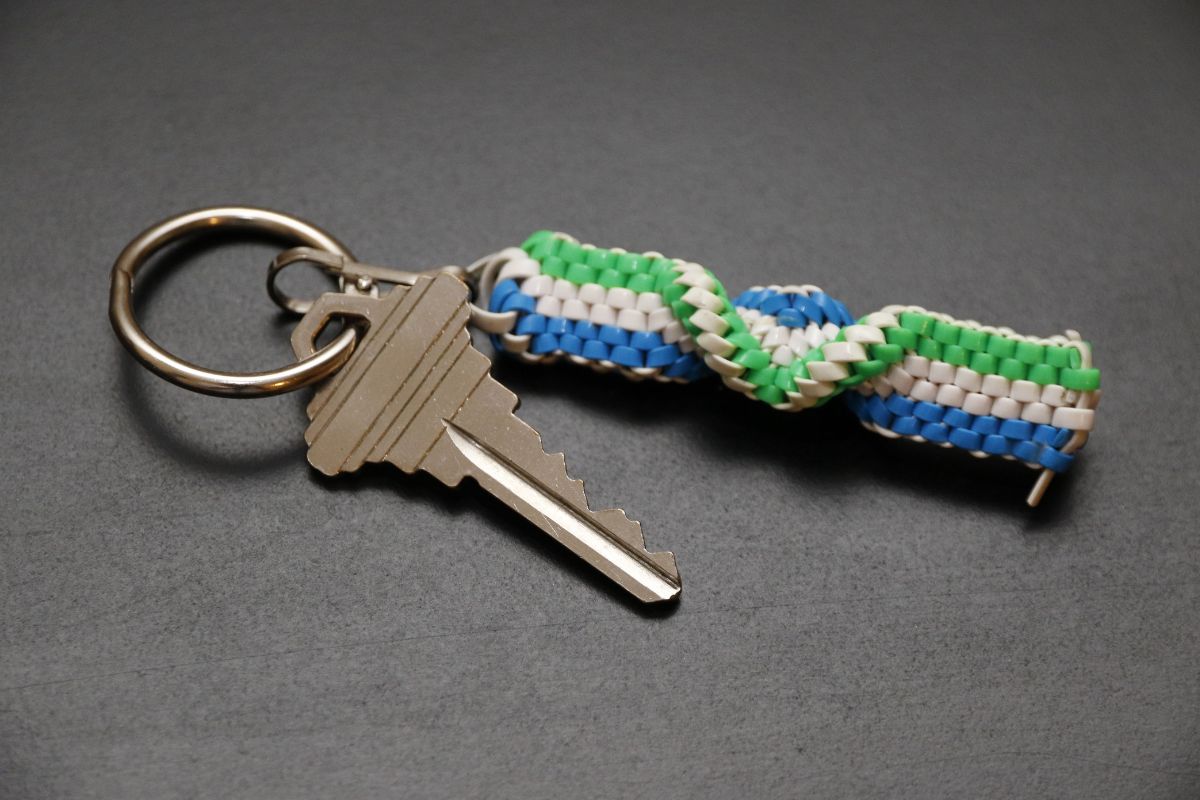
When considering the environmental impact of lanyards, I focus on the choice of materials and their life cycle. Sustainable materials like cotton are more eco-friendly because they are biodegradable and renewable. I also consider recycled content, where materials from previously used products are repurposed for new lanyards.
| Material Type | Environmental Benefit |
| Cotton | Biodegradable, renewable |
| Recycled Plastic | Reduces waste, conserves resources |
| Bamboo Fiber | Fast-growing, biodegradable |
I value lanyards that are designed to be reusable, which significantly lowers their environmental footprint by minimizing the need for frequent replacement. This practice also aligns with sustainable usage patterns, as it avoids the wasteful single-use mentality.
In my experience, the best eco-friendly lanyards are those that combine recyclability and durability. By ensuring that the lanyard can either go back into the recycling stream or last for an extended period, I help reduce the environmental impact associated with producing new lanyards.
Lanyards that incorporate environment-friendly dyes and printing processes further minimize harmful emissions and pollution. My approach is always to seek and recommend lanyards that demonstrate a commitment to environmental sustainability without compromising on quality and functionality.
Regulatory Compliance and Standards
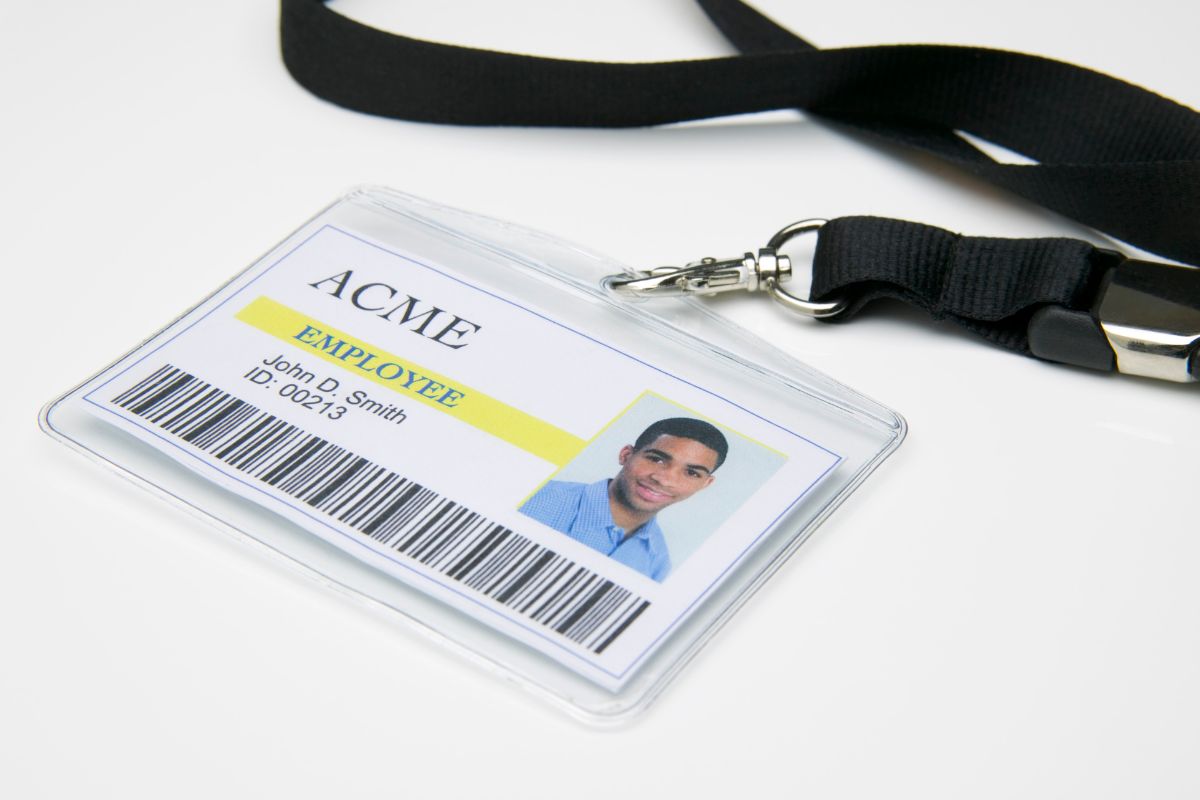
When discussing safety lanyards, I recognize the importance of adhering to regulatory compliance and standards. These standards are in place to ensure the utmost safety for workers across various industries, including construction and military operations where the risk of falls is prevalent.
The Occupational Safety and Health Administration (OSHA) sets forth stringent regulations that I and my colleagues must follow. These pertain to the adequacy of fall protection gear, including lanyards. For construction, lanyards must meet OSHA’s criteria, which include specifications for energy-absorbing capabilities, as well as particular strength and durability requirements.
To align with industry standards, certifications such as ANSI and ISO are often sought after. These certifications provide a seal of assurance that safety equipment like lanyards has undergone extensive testing and meets rigorous safety criteria. I ensure the lanyards’ compliance through regular inspections as instructed by regulatory bodies, checking for signs of wear and tear and making sure they are suitable for their intended use.
In military applications, where gear might also secure weapons, standards are particularly stringent due to the extreme conditions and the potential severity of accidents. Adherence to military specifications, or MIL-SPEC, ensures robustness and consistent performance under various circumstances.
The following list includes essential regulations and standards I adhere to with safety lanyards:
- OSHA Standards
- ANSI/ASSE Z359.1 (Safety Requirements for Personal Fall Arrest Systems)
- ISO 9001 (Quality Management Systems)
- MIL-SPEC (for military-specific applications)
Compliance with these regulations is paramount for worker safety and, as such, cannot be overlooked. Ensuring all equipment meets these standards is a critical part of my responsibility to protect those who are at risk of falling from height.
Frequently Asked Questions
In this section, I’ll address some common inquiries about lanyards, providing insights into their various applications, materials, types, and safety features.
What are the different uses of various lanyard types?
Different lanyards serve distinct purposes. Neck lanyards are versatile, often used to hold ID badges, keys, and phones. On the contrary, specialized lanyards like twin-leg models are used for anchoring individuals in industrial settings.
How do I choose the right material for my lanyard needs?
The choice of material depends on usage. For high wear and tear, nylon is ideal, whereas for budget-friendly options, tube lanyards are sufficient. Your specific needs like durability, flexibility, and cost will dictate the best material.
What are the key differences between shock absorbing lanyards and standard lanyards?
Shock absorbing lanyards are engineered to reduce the impact force on the body if a fall occurs, making them suitable for safety applications. Standard lanyards lack this feature and are more for carrying everyday items.
Can you explain the various types of clips used in lanyard design?
There are multiple clip options for lanyards—swivel hooks, key rings, and bulldog clips are common. Swivel hooks rotate to prevent tangling, key rings secure keys, and bulldog clips are used mainly for ID badges due to their simple pinch mechanism.
What should be considered when selecting a lanyard for fall protection?
When selecting a lanyard for fall protection, consider the lanyard length, shock absorbing capacity, and the maximum working load. The choice should meet the safety standards relevant to your environment and the nature of the work.
How do woven and nylon lanyards compare in terms of durability and application?
Woven lanyards offer a comfortable feel with moderate durability, suitable for everyday items. Nylon lanyards provide superior durability and strength, recommended for industrial applications or situations with higher security needs.

